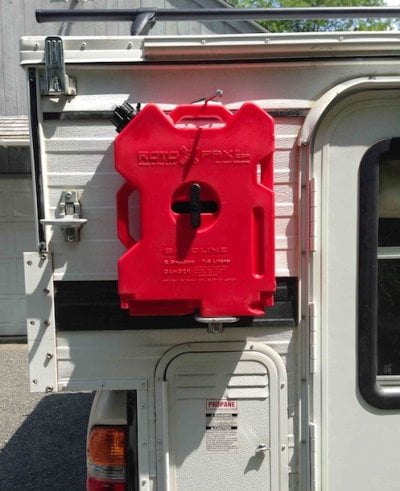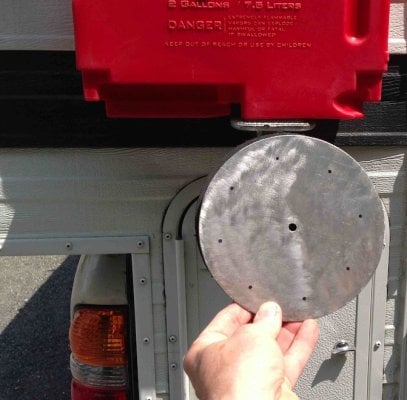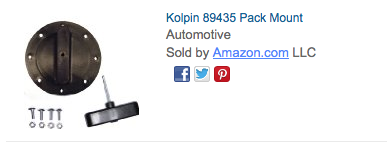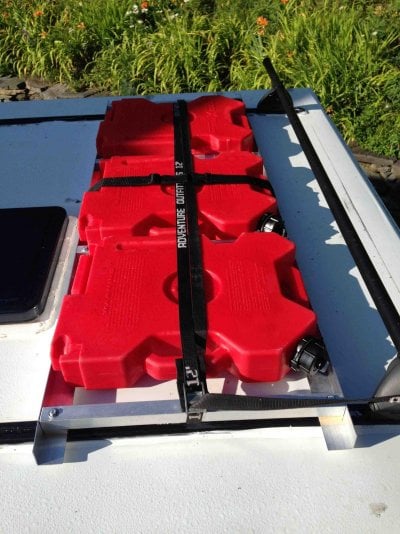2011 Eagle and wanted to mount a rotopax gas tank on the rear wall. I have no LP fridge (I do have an Engel) so have access to inside wall. The photos show the approximate spot and also the aluminum plate which would go on the inside wall with through bolts. I have a neoprene gasket and would use a sealer.
Advice from those that have done this type of mount? Terry suggested going through a support piece but I think I might only hit with one bolt as it is a 6" circle plate.
I also wanted to mount 2 other tanks on a wire shelf (like a restaurant wire shelf) secured across the roof, attached to Yakima track slots using "T" slot bolts which would secure the shelf (like a basket). It would be below the racks so it won't get in the way of canoe. Any advice on this?
Advice from those that have done this type of mount? Terry suggested going through a support piece but I think I might only hit with one bolt as it is a 6" circle plate.
I also wanted to mount 2 other tanks on a wire shelf (like a restaurant wire shelf) secured across the roof, attached to Yakima track slots using "T" slot bolts which would secure the shelf (like a basket). It would be below the racks so it won't get in the way of canoe. Any advice on this?






